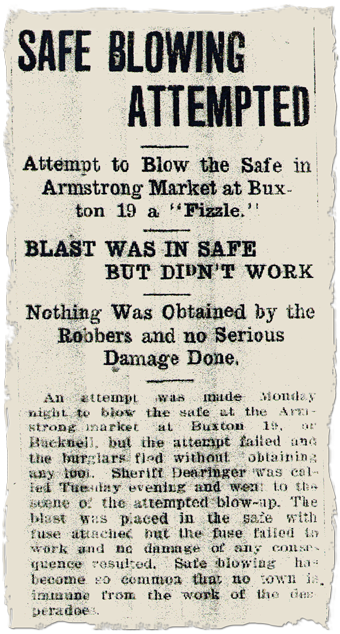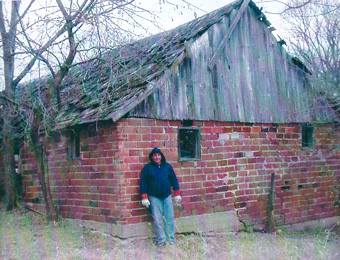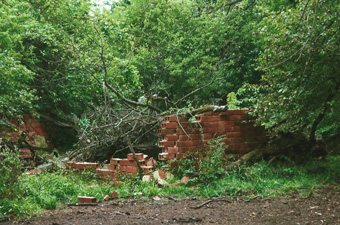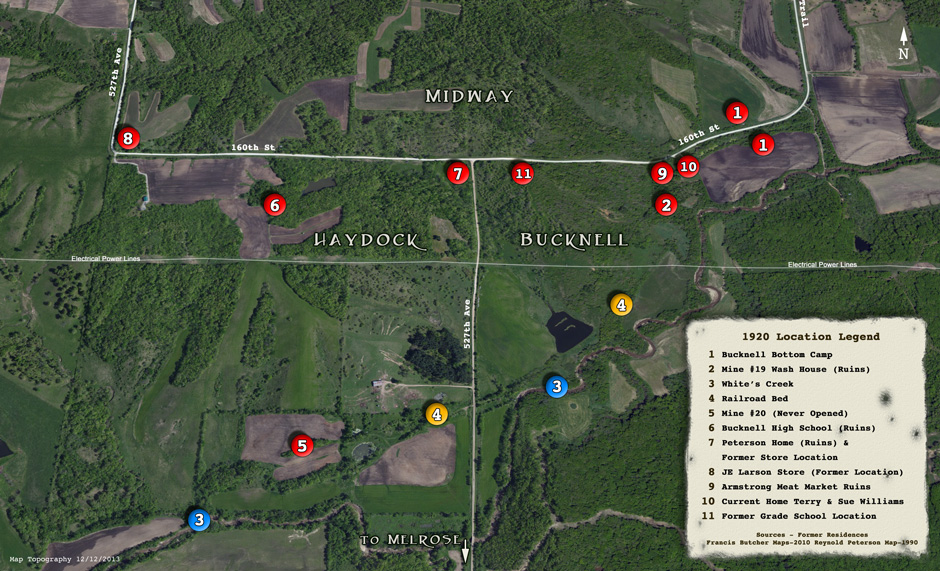
http://www.buxtoniowa.com • Consol, Haydock & Buxton Iowa, USA • 1871 - 2014
Bucknell, Iowa 1921
Armstrong Meat Market Robbery
Letters to the Editor
Monroe County News, Page 3
‘Looking Back’ helps history sleuth
January 10, 2012
Eric Bishop’s weekly “Looking Back” column in the Albia newspaper is the main reason I subscribe to the paper from my home in Minneapolis, MN. My family roots are in the coal mining camps of Muchakinock, Buxton (East Swede Town and Coopertown) and Haydock (Midway).
Mr. Bishop, in a recent column, referenced a robbery attempt at Art Armstrong’s Market in December 1921. The market was located a short distance (1/4 mile) north of mine 19. The article gave the location as being at Buxton 19 or Bucknell. I questioned Mr. Bishop as to why he referred to Consolidation Coal Company’s mine 19 as being called Buxton 19 since the mine was well over 20 miles by rail from Buxton and was in the Consol coalfield and not in the Buxton coalfield. Mr. Bishop replied by sending me an actual copy of the December 1921 newspaper article that used the phrase “Buxton 19.”
Since that got Mr. Bishop off the hook with me so to speak, I put a time capsule on the dates and realized that in that time frame of December 1921 the Bucknell camp name had only originated a short time before the robbery attempt so I am sure the reporter at the time used the designation of Buxton 19 most likely as a mere convenience.
The correct designation should have been Consolidation Coal Company’s mine 19 or just Bucknell. Actually, Bucknell was called Almack initially by the company’s surveyor, R.W. Butcher. Unfortunately errors in the recording of history seem to compound themselves. As an example, currently Wikipedia lists Consol’s mine 18 as Buxton’s mine 18. Mine 18 was less than a mile from Consol and two miles from mine 19. Mine 18 supplied all of the DC electrical power to mine 19 for lifting the coal from the 235 foot mineshaft at 19.
The brick walls for Art Armstrong’s market that according to the newspaper article was attempted to be robbed in December 1921, were until recently standing on the south side of H32 (162 Street) just west across the ravine from the current residence of Terry and Sue Williams. The walls collapsed over the past year.
The Armstrong Market was one of the few buildings to be constructed in coal mining camps using brick. As it worked out, for the most part the only remaining landmarks for the coal camps are those built of brick. Since coal camps frequently relocated it would not have been practical to move a brick building. Other brick buildings that still remain standing (at least their walls) are the miner’s wash house (shower) at mine 19, my grandparent’s (Dave and Emma Peterson) home at the intersection of H32 and the Melrose Road (527 Avenue), the movie house in Consol, and the brick foundation of Bucknell High School in Haydock at the top of mine 20 hill.
I have been exploring Monroe County’s coal mining camps most of my life and have great fondness for its “lore.” Thank you, Mr. Bishop and the Albia Union-Republican newspaper, for the time and effort you put in to bringing this column to your readers, especially me.
Yours truly,
Gordon R. Peterson



